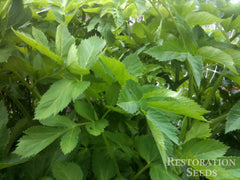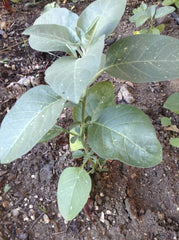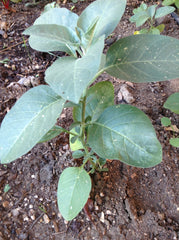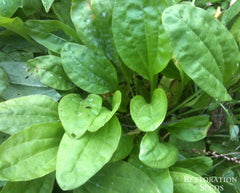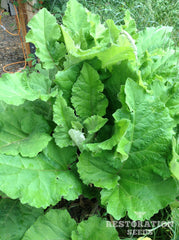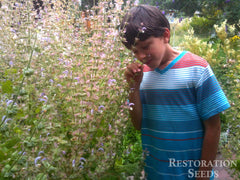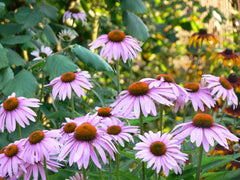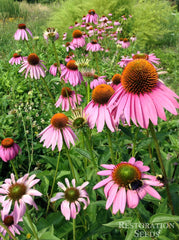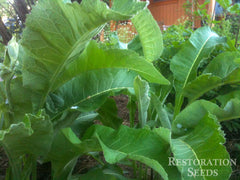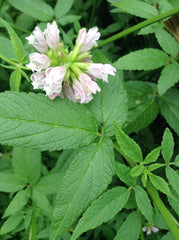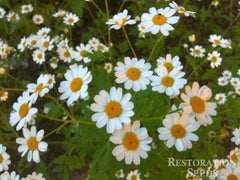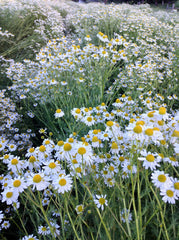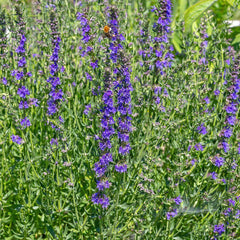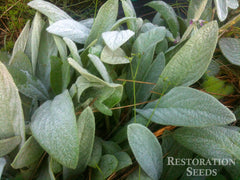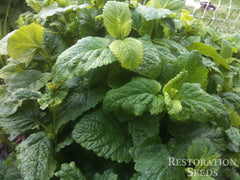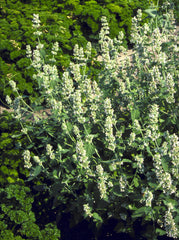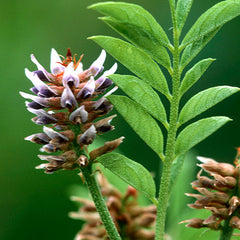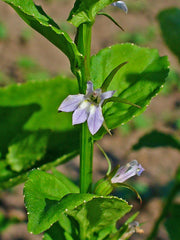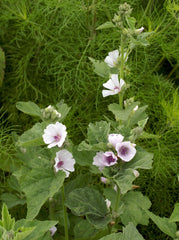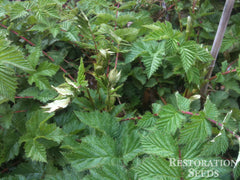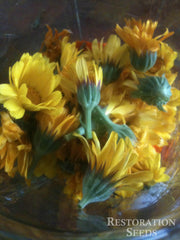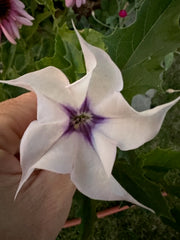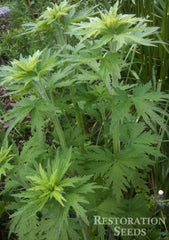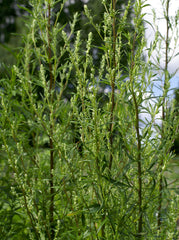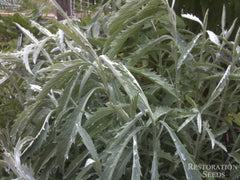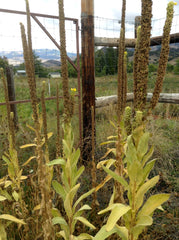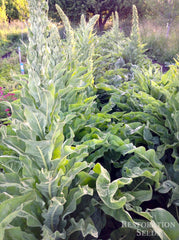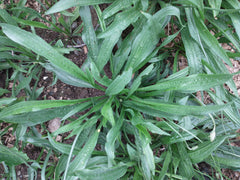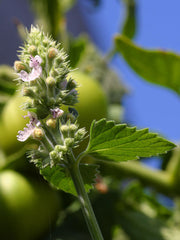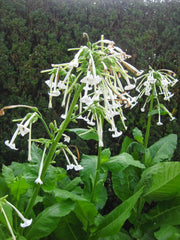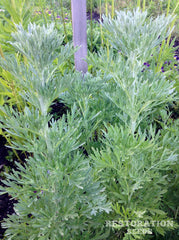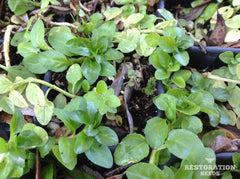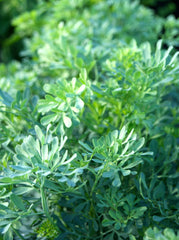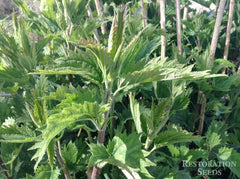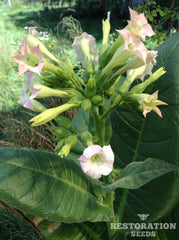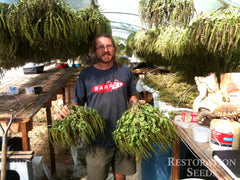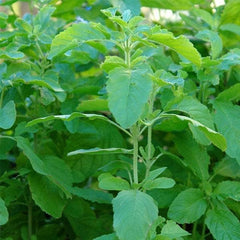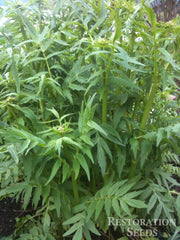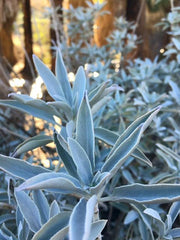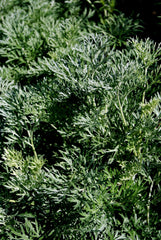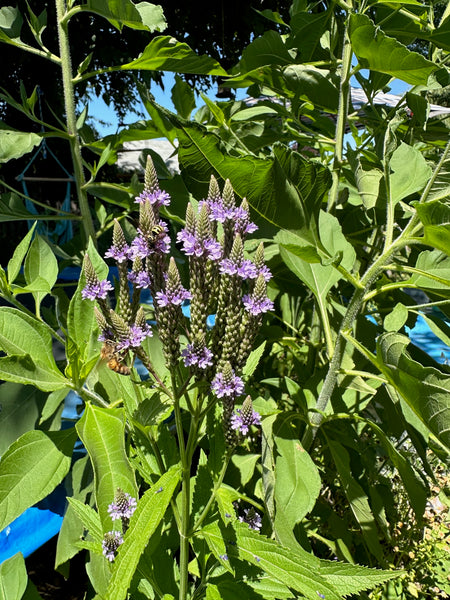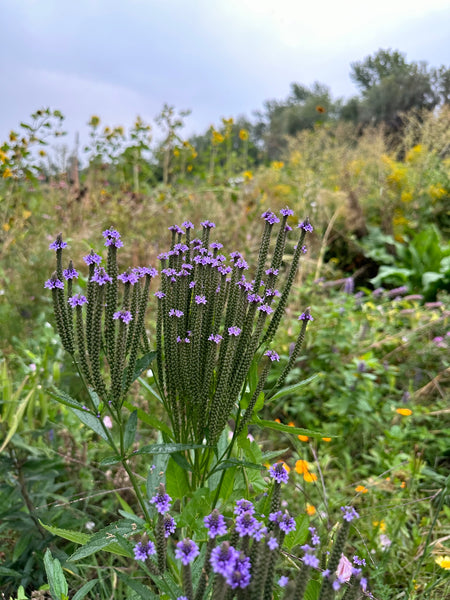Blue Vervain
Verbena hastata
HOW TO GROW VERVAIN
Sow in the early spring when temperatures are still cool. Alternatively, provide 2 weeks of cold stratification by putting seeds in a moist medium in a plastic bag in the refrigerator, and then sow in warmer soil later in the season. Barely cover seeds with soil and tamp lightly. Plant young starts 2’ apart in full sun with moist garden soils. If you do not want the plants to spread, keep them in pots, or cut back the flowers to prevent seed spreading and vigorous growth. Soil pH 6-7. Hardiness zones 3-7. Perennial.
Days from maturity calculated from the date of seeding. Average 105,000 seeds per ounce.
Planting Depth surface requires light
Soil Temp. Germ. 60-80 stratify
Days to Germ. 14-28
Plant Spacing 2’
Row Spacing 2’
Full Sun, Moist Well Drained Soil
Days from maturity calculated from the date of seeding. Average 105,000 seeds per ounce.
Planting Depth surface requires light
Soil Temp. Germ. 60-80 stratify
Days to Germ. 14-28
Plant Spacing 2’
Row Spacing 2’
Full Sun, Moist Well Drained Soil
- 100 Seeds$4.10
- 1000 Seeds$15.50
Also known as American Blue Vervain and Swamp Verbena. Grows upright 3-5’ tall, yet also is creeping, with multiple spikes of long-lasting bright blue/purple flowers that bloom from June through September. This self-seeding herbaceous perennial is native to the Eastern US. The leaves and roots were traditionally use...
Also known as American Blue Vervain and Swamp Verbena. Grows upright 3-5’ tall, yet also is creeping, with multiple spikes of long-lasting bright blue/purple flowers that bloom from June through September. This self-seeding herbaceous perennial is native to the Eastern US. The leaves and roots were traditionally used as medicine, dried or fresh. Leaves were used in a boiled tea as a spring tonic, and roots were used for colds, fevers, indigestion, an antidote to American Pokeweed poisoning, and many more ailments. It’s a great pioneer species on degraded land, a larval host for pollinators, and helps to stabilize streambanks. Also used in landscaping for its lovely bright flowers. Tags: Color: Purple, Season: Spring Summer Fall.
The genus name, Verbena, translates from Latin to “sacred” or “bough”. Hastata comes from the Latin word, hastatus, which translates to “spear-shaped”. The leafy branches of the plant were used in religious ceremonies and as medicine in ancient European countries. Blue Vervain is native to North America and southern Canada. It’s oftentimes found in moist environments such as ditches, marshes, fields, meadows, and streambanks.
The genus name, Verbena, translates from Latin to “sacred” or “bough”. Hastata comes from the Latin word, hastatus, which translates to “spear-shaped”. The leafy branches of the plant were used in religious ceremonies and as medicine in ancient European countries. Blue Vervain is native to North America and southern Canada. It’s oftentimes found in moist environments such as ditches, marshes, fields, meadows, and streambanks.
Learn More
Reviews
